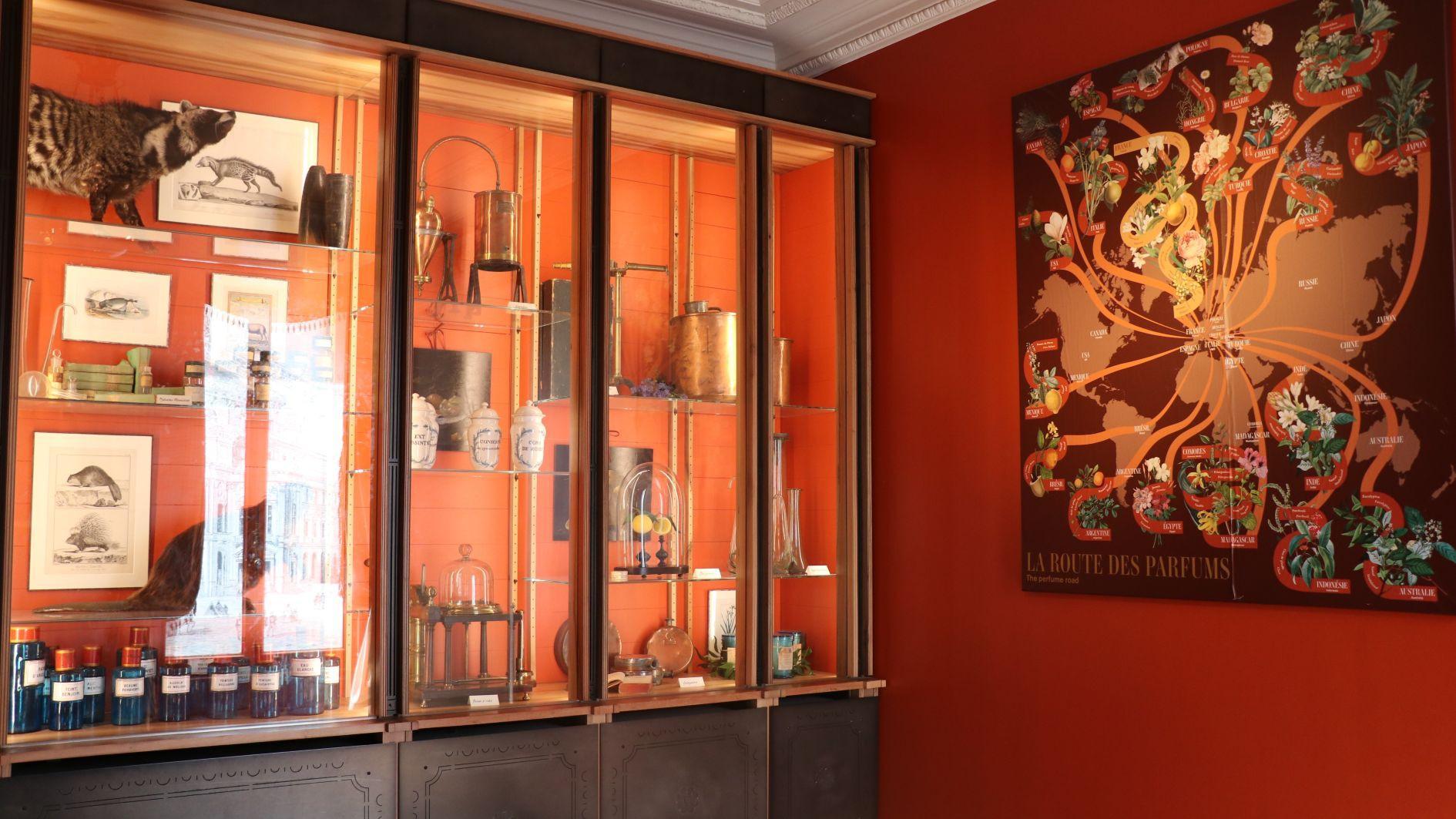
Known as the capital of perfume, the Fragonard Perfume Museum in Paris takes visitors on a journey through the history of fragrances, bottles and production techniques, while also highlighting the lasting contribution of the Turkish rose among essences from around the world used in French perfumes.
While the southern city of Grasse stands out in perfume production thanks to its rich floral variety, the Fragonard Perfume Museum in Paris welcomes visitors year-round to explore the evolution of fragrance culture from antiquity to modern times.
Museum visitors discover what kinds of scents and perfume bottles were used across different eras and the essential oils behind them.
Charlotte Urbain, head of culture and communications at Maison Fragonard, and guide Nazan Özarslan spoke to state-run Anadolu Agency about the museum’s foundation and the transformation of scent culture over time.
Urbain explained that Jean-François Costa, owner of the Fragonard perfumery in Grasse and a collector of antique bottles and art objects, opened the museum in 1983.
She said Costa gathered a large collection that tells the story of perfume nearly from its origins and noted that the museum’s oldest piece dates back about 3,000 years.
Highlighting that residents of Grasse came to Paris in the 19th century to present their perfumes, Urbain added, “First, we introduce visitors to the story of Grasse, a town once home to leather workers that transformed into a perfume hub. Then, through various authentic bottles, we show perfume history from Ancient Egypt to the 20th century. Finally, we present how perfume was produced in the past and today, with visuals from our factories in southern France.”
Urbain noted that the museum receives visitors from across the globe, including Türkiye, and said they hold a significant collection of “pomanders,” or perfume balls, while staff collectively speak 20 languages.
“In the past, people believed bad odors spread disease. To protect themselves from foul smells and illness, they would carry items called pomanders on their belts, wrists, or around their necks,” Urbain explained.
Perfume means ‘through smoke’ in Latin
Özarslan, who guides visitors in Turkish, French, and English, explained that the word perfume comes from the Latin “Per Fumum,” meaning “through smoke.”
She said perfume was first used by ancient civilizations for religious purposes, burning wood and incense to communicate with gods or other realms.
Noting that France, despite its favorable climate, depends on plants, flowers, and spices from around the world, Özarslan explained that vanilla in perfumes comes from Madagascar, geranium from Egypt, and rose from Isparta in Türkiye.
“There are also beautiful roses in Romania and Bulgaria, but the Turkish rose is always three steps ahead,” she said.
Özarslan stressed that while the Islamic world thrived in science during the Middle Ages, Europe faced the Black Death, which killed between a third and a half of its population.
“People used perfume as a kind of medicine because they believed illnesses came from bad smells. They carried perfume bottles of different shapes with them as protection,” she explained.
Özarslan said people in Europe stopped bathing because they believed diseases came from water. She noted that King Louis XIV of France, known as the “Sun King,” bathed only five times in the 71 years he reigned.
Today, when people think of a bathhouse, they think of the Turkish hammam, she said, adding: “This tradition came to the Ottomans from Rome and to them from the Greeks, and even further back to Mesopotamia. If Turks are carrying this heritage today and not the French or Germans, I believe this is something we should be very proud of.”
Özarslan said hygiene practices revived in the 1700s in Europe and that the love of flowers by Queen Marie Antoinette helped perfumes evolve into more floral and delicate forms.
Visitors are greeted at the museum entrance by a bust of Marie Antoinette, “a woman who changed perfume fashion significantly,” Özarslan said.
She explained that while animal essences like amber were popular, the queen hired her own perfumer to create a signature scent.
“All perfumes were unisex until the 19th century,” she added. “When a father brought home perfume, the whole family would use the same one.”
Özarslan also noted that cologne, seen as a hygiene revolution in Europe, was discovered in this period, with Napoleon Bonaparte reportedly using 40 liters of cologne a month because it reminded him of the citrus notes of his Corsican childhood.
Explaining that steam distillation has been used for centuries in perfume making, she concluded: “Today, we mix essential oils in specific formulas and add alcohol. Why? Because applying pure oil smells strong but does not diffuse well, while alcohol dissolves the oil and allows the fragrance to spread.”